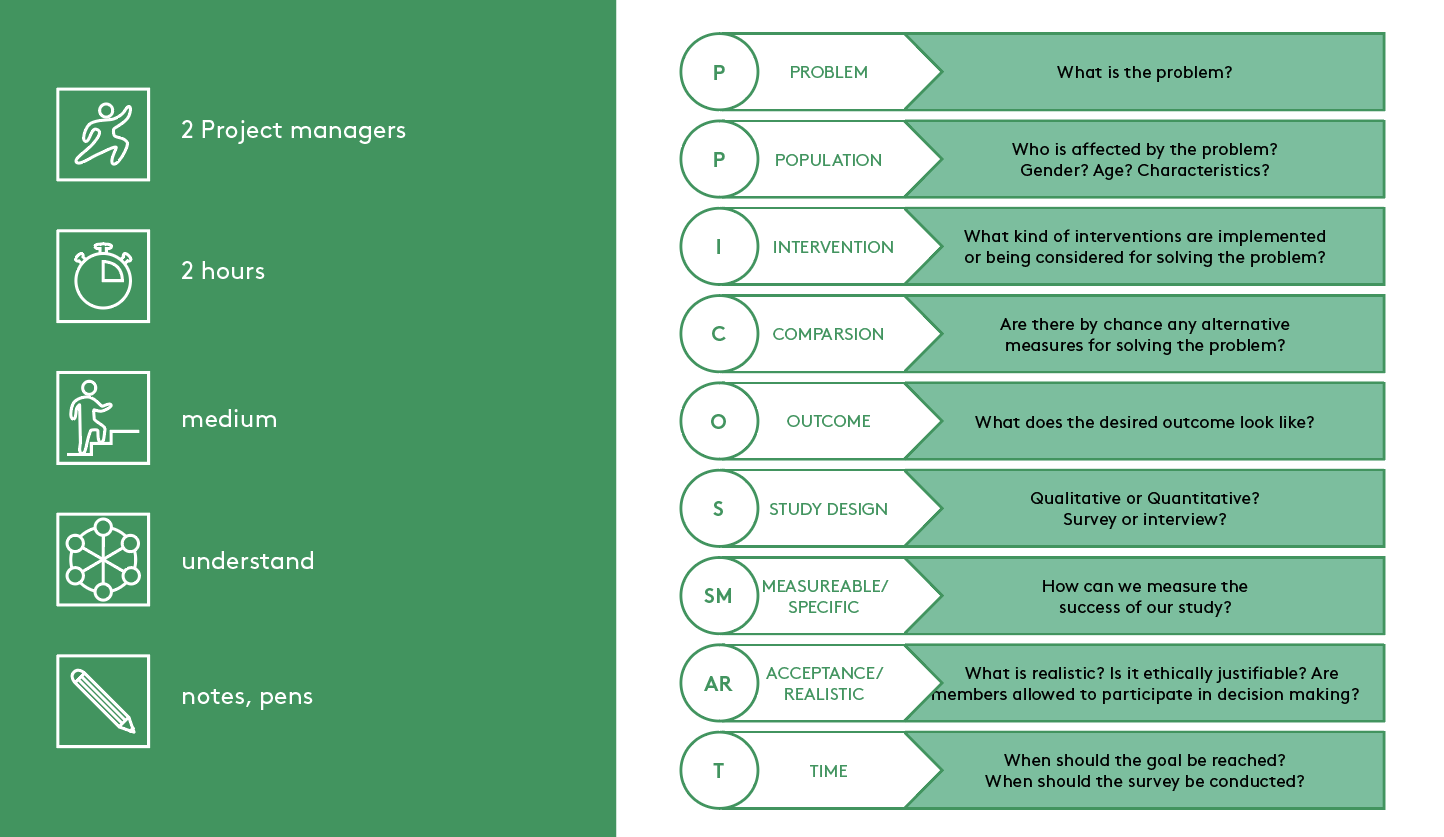In münster.land.leben, the sub-project "Fall Management with Civic Engagement" aims to find out what the supporting and inhibiting factors are for social volunteering in the community. To this end, those responsible for the project explored the question of what support should look like in an emergency health situation or after a fall at home, so that those affected and their relatives feel safe and comfortable. In this context, the experiences and wishes of older persons were to be elaborated in order to be able to derive from the conversations what a possible chain of care could look like in the future. In order to develop a suitable research question for the conversations with the concerned persons and to create an interview guide, those responsible for the project used the Smart PICO method. In the first approach, twenty seniors were interviewed in the form of qualitative phone interviews on the topic of "growing older in one's own home". For this, in addition to the parameters of the PICO method from the clinical context - population, intervention, outcome, and study design (comparison was not used because no alternative measures were known at that time), SMART criteria from the management context - specific & measurable, acceptable & realistic, and time - were added. Based on previous experiences from the subproject, the Smart PICO scheme was filled in. Based on the parameters of the Smart PICO method, two corresponding questions were elaborated: Is there a need and willingness on the part of the citizens to deal with preparatory measures for fall management? Which measures and actors are desired in fall situations and is there willingness to use and provide support? Overall, the method helped the project managers not to lose sight of the core of the question during the discussion. With the help of the interesting findings from the individual interviews, the project managers succeeded in answering the previously developed research questions.




